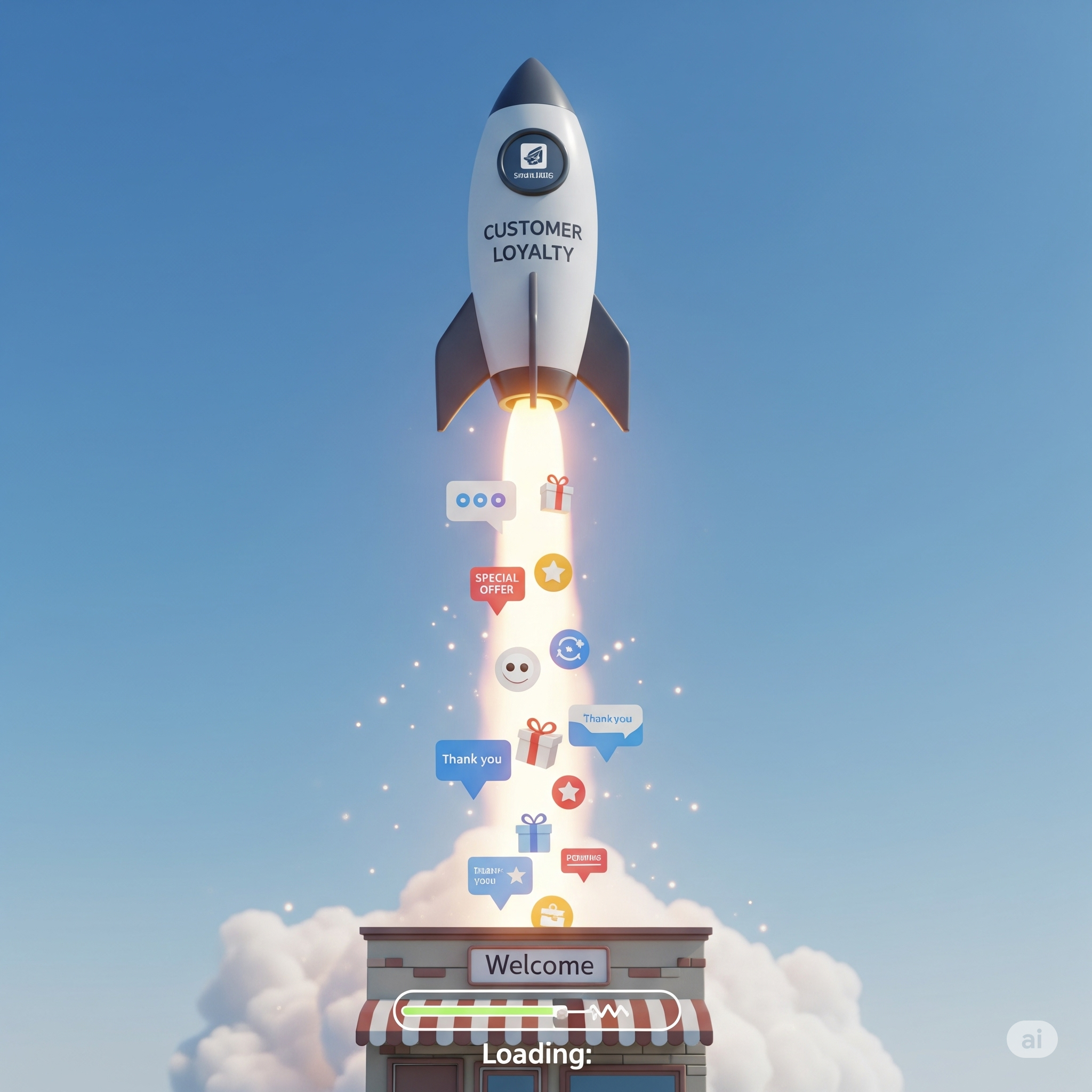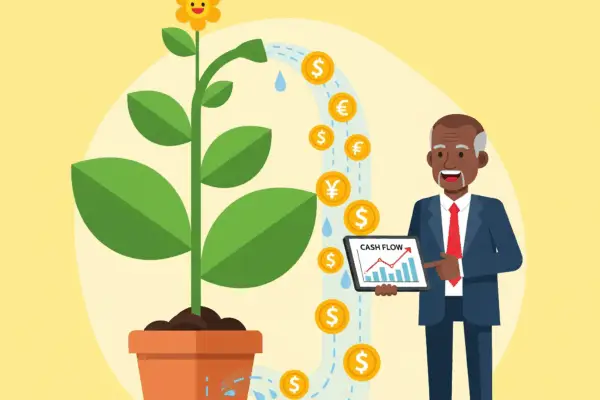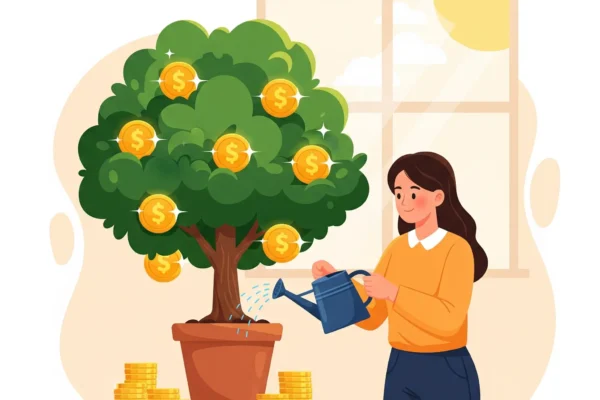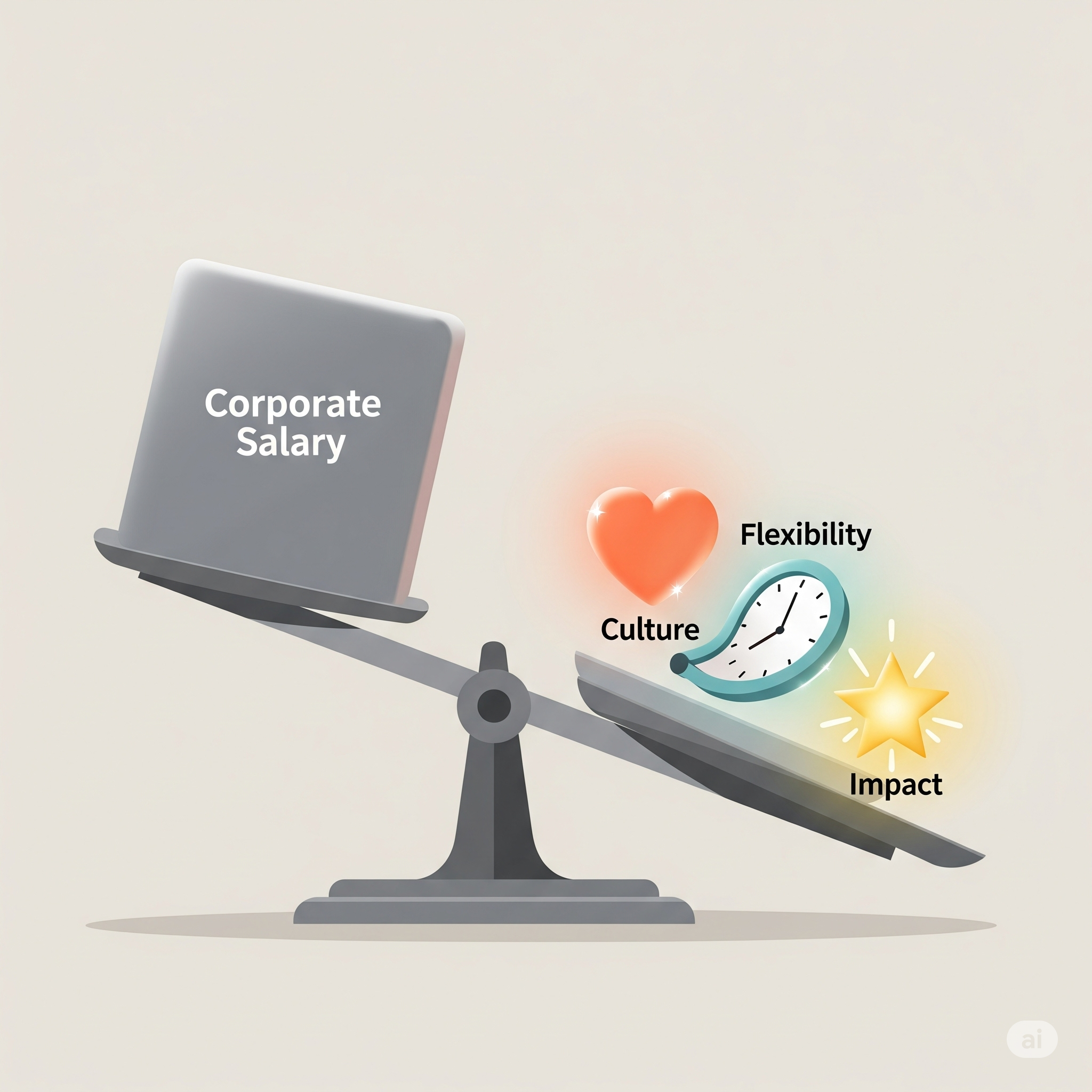Alright, let’s talk about something truly transformative for your business, something that shifts the entire paradigm of how you think about your customers. Because if you’re still operating under the assumption that the sale is the finish line, my friend, you’re missing out on an ocean of opportunity. You’re leaving money, loyalty, and organic growth on the table.
Today, we’re diving deep, far beyond the initial transaction, into the vibrant, fertile ground of post-purchase engagement. This isn’t just about sending a thank you email; it’s about building a relationship, fostering a community, and transforming first-time buyers into raving fans and lifelong advocates. And for your small business, this isn’t just a nice-to-have; it’s a non-negotiable cornerstone of sustainable growth, differentiation, and undeniable success.
Think about it: the moment someone hits “purchase” or walks out of your shop with your product or service, that’s not the end of their journey with you. Oh no, my astute entrepreneur, that’s just the beginning. It’s the first step in a beautiful, potentially lucrative, and incredibly rewarding dance. This is where the real magic happens. This is where you solidify trust, demonstrate value, and cultivate the kind of loyalty that money can’t buy, and competitors can’t easily replicate.
Many businesses, especially small businesses with limited resources, pour the lion’s share of their energy, time, and marketing budget into acquisition. They chase new leads, craft compelling ads, and optimize conversion funnels. And that’s absolutely necessary. But what happens after the conversion? Too often, it’s a deafening silence. A dropped ball. A missed opportunity to turn that one-time sale into a hundred-time customer, or even a customer who brings you a hundred more customers.
The truth, backed by countless studies and reams of data, is that retaining an existing customer is significantly cheaper – five to twenty-five times cheaper, depending on the industry – than acquiring a new one. Let that sink in. Your existing customer base is a goldmine. They’ve already shown they trust you enough to part with their hard-earned money. Now, it’s your job, your privilege, to deepen that trust, to make them feel seen, valued, and genuinely cared for. This is the essence of post-purchase engagement. It’s about nurturing the seed of interest into a mighty oak of loyalty.
For small business owners, this strategy isn’t just about efficiency; it’s about survival and thriving. You don’t have the limitless marketing budgets of corporate giants. You rely on reputation, word-of-mouth, and the personal touch. Post-purchase engagement amplifies all of these. It turns your customers into your most effective marketing team, spreading the word, leaving glowing reviews, and bringing in new business without you lifting a finger or spending an extra dime on advertising.
So, how do we do it? How do we move beyond the sale and build that unbreakable bond? Let’s break it down, step by actionable step, into the core pillars of a robust, relationship-centric post-purchase strategy.
Pillar 1: The Immediate Embrace – The First 24-72 Hours
This is the honeymoon period. Your customer is excited, possibly a little anxious, and definitely open to hearing from you. This isn’t the time for silence. This is the time for a warm, reassuring, and value-driven embrace.
The Grateful Thank You: This seems obvious, right? But how many businesses truly excel at it? Beyond a generic “Thank you for your order” email, think about personalization. If they bought a specific item, mention it. “We’re so excited for you to experience [Product Name]!” For a small business, a handwritten note tucked into a package can be an absolute game-changer. It takes seconds, costs pennies, and speaks volumes about your care and attention to detail. It shows there’s a human behind the transaction. Imagine receiving a package and finding a genuine, handwritten note from the owner – that’s memorable. That builds an immediate connection.
Setting Expectations & Providing Reassurance: After the “thank you,” the next crucial piece of information is “what happens next?” When will it ship? How will they track it? What’s the estimated delivery window? Clear communication alleviates anxiety and builds trust. If there are potential delays, be proactive in communicating them. A small business that keeps its customers informed, even when things go awry, earns far more respect than one that leaves them in the dark.
The “Getting Started” Guide / Initial Usage Tips: This is proactive problem-solving and value delivery. If your product requires assembly, specific care, or initial setup, provide clear, concise instructions immediately. This could be a link to a video tutorial, a downloadable PDF, or even just a few bullet points in the follow-up email. Anticipate common questions and answer them before they’re even asked. For a small business selling intricate craft supplies, a link to a beginner’s project or a “first steps” video series can make all the difference between frustration and delight. For a local service, this might be a pre-arrival checklist or tips for getting the most out of their first session. You’re not just selling a product; you’re selling success and enjoyment with that product.
Pillar 2: Empowering Engagement & Maximizing Value – The Ongoing Journey
Once the initial excitement settles, the real work begins: ensuring your customer is genuinely successful and happy with their purchase. This isn’t about pushing more sales; it’s about ensuring they extract maximum value from what they’ve already bought.
Educational Content That Solves Problems: Think about the “how-to” aspect. How can your customer use your product or service more effectively, creatively, or deeply? This could be a series of emails with advanced tips, links to blog posts, video demonstrations, or even exclusive webinars. If you sell specialized coffee beans, send an email with brewing tips for different methods. If you offer a fitness program, provide healthy recipes or workout variations. For small businesses, this demonstrates expertise and generosity. You’re showing you care about their success, not just their wallet. This content positions you as a trusted authority, a partner in their journey.
Proactive Support & Troubleshooting: Don’t wait for problems to arise. Anticipate them. Send a follow-up email a week or two after delivery, checking in. “How are you enjoying your [Product Name]?” Offer a direct line to support. Provide solutions to common issues you’ve observed. “Many users find [this tip] helpful when [this common problem] arises.” This proactive approach significantly reduces frustration and transforms potential negative experiences into positive support interactions. It shows you’re invested in their long-term satisfaction.
Community Building: Humans are social creatures. We crave connection and shared experiences. Can you create a space where your customers can connect with each other, share their experiences, and get advice? A private Facebook group, a dedicated forum on your website, or even just encouraging them to use a specific hashtag on social media can foster a sense of belonging. For a small business, this community becomes a self-sustaining ecosystem of support, shared knowledge, and organic advocacy. It turns customers into brand ambassadors and friends. Imagine a local bakery creating a “Baking Club” where customers share their creations using the bakery’s special flour blend. Powerful stuff.
Subtle, Value-Driven Upsell/Cross-Sell (When Appropriate): This needs to be handled with finesse. It’s not about aggressively pushing another sale. It’s about offering complementary products or services that genuinely enhance their existing purchase. If they bought a camera, suggest lenses or accessories. If they hired you for web design, perhaps offer ongoing maintenance packages. The key is to frame it as a solution, an enhancement, or a next logical step. Timing is crucial – wait until they’ve had a chance to enjoy their initial purchase. And always, always, highlight the value it adds, not just the price. “To truly unleash the power of your new [Product X], customers often find [Complementary Product Y] to be the perfect next step.”
Pillar 3: The Art of Listening – Soliciting & Acting on Feedback
This is where you turn passive engagement into active improvement and demonstrate that your customers’ opinions truly matter.
Strategic Surveys & Feedback Requests: Don’t bombard them, but do ask. A short, targeted survey a few weeks after purchase can provide invaluable insights. Keep it brief. Ask about their satisfaction with the product, the delivery process, and their overall experience. Tools like SurveyMonkey or Google Forms are free and easy to use for small businesses. Consider offering a small incentive for completion – a discount on a future purchase, entry into a drawing, or even a piece of exclusive content. The goal isn’t just to collect data, but to show you’re listening.
Encouraging Reviews & Testimonials: Reviews are the lifeblood of online businesses and increasingly vital for small businesses with a local presence. Don’t be shy about asking! Make it easy for them. Send a direct link to your Google Business Profile, Yelp page, or product review section. Explain why reviews matter (they help other customers make informed decisions, they help your business grow). A personal request, perhaps after a positive support interaction or a survey response, is often more effective. For small businesses, genuine, heartfelt reviews from real customers are gold. They build credibility and social proof like nothing else.
Creating Easy Communication Channels: Make it simple for customers to reach you with questions, concerns, or praise. This means more than just an email address buried on your contact page. Think live chat on your website, a dedicated customer service email, or even an active presence on social media with quick response times. The easier it is for them to communicate, the more likely they are to reach out before frustration sets in, and the more likely you are to turn a potential negative into a positive.
Closing the Loop: Acting on Feedback: This is the most critical part. Collecting feedback without acting on it is a waste of everyone’s time. If you receive a negative review or a critical piece of feedback, address it promptly, publicly (if appropriate and constructive), and professionally. If you make a change based on customer suggestions, tell your customers about it! “You asked, and we listened! Based on your feedback, we’ve improved [Feature X].” This demonstrates genuine responsiveness and builds incredible goodwill. For a small business, showing you’re agile and responsive to customer needs is a massive competitive advantage. It fosters a sense of partnership.
Pillar 4: The Art of Personalization & Nurturing – Deepening the Bond
Beyond the transactional, this is about treating your customers as individuals, not just numbers.
Segmentation and Targeted Communication: Not all customers are the same. Segment your audience based on their purchase history, behavior on your site, demographics, and expressed preferences. Then, tailor your communications. If someone bought a dog toy, they likely don’t want emails about cat litter. If they’re a repeat buyer of a specific product line, send them updates or special offers related to that line. Email marketing platforms (even free or low-cost ones) allow for sophisticated segmentation. For small businesses, even simple segmentation (e.g., first-time buyers vs. repeat customers) can make a huge difference in email open rates and engagement.
Tailored Content and Offers: Based on your segmentation, send content that is truly relevant and valuable to that specific customer. This could be product updates, educational articles, exclusive sneak peeks, or special discounts on items they’ve shown interest in or that complement their past purchases. The more personalized the communication feels, the less it feels like marketing and the more it feels like a helpful suggestion from a trusted friend.
Anniversaries and Milestones: Celebrate with your customers! Their purchase anniversary, their birthday, or even the anniversary of their first interaction with your brand. A simple “Happy Birthday!” email with a small discount code or a “One Year with Us!” message can be incredibly endearing. It shows you remember them, that they’re more than just a transaction. For small businesses, these moments can be handled with an extra layer of personal touch, perhaps even a personalized video message for VIP clients.
Loyalty Programs & Exclusive Access: Reward your best customers. This could be a points-based system, tiered membership (bronze, silver, gold), or simply exclusive access to new products, early sales, or special events. Make your loyal customers feel special and appreciated. These programs not only incentivize repeat purchases but also foster a sense of belonging and exclusivity. Even a simple “punch card” for a local coffee shop or a “friends and family” discount for a boutique small business can be a powerful loyalty driver.
Surprise & Delight: This is the cherry on top. Unexpected gestures of appreciation that leave a lasting positive impression. A small, complimentary gift with a repeat order. An upgraded shipping option without being asked. A personalized video message when they hit a certain loyalty tier. These gestures are memorable because they are unexpected and go beyond the transactional. For a small business, a handwritten thank you note with a small, unexpected token of appreciation (a sticker, a sample, a bookmark) can create an incredible emotional connection.
Pillar 5: Cultivating Advocacy – Turning Fans into Evangelists
The ultimate goal of post-purchase engagement is to create customers who are so thrilled with your product and service that they actively tell others about you.
Identifying and Nurturing Advocates: Who are your biggest fans? Who leaves the best reviews? Who comments positively on your social media? Identify these loyal customers and actively nurture them. They are your most valuable asset.
Referral Programs: Formalize the advocacy. Create a clear, incentivized referral program that rewards both the referrer and the referred. “Refer a friend, and you both get X% off your next purchase!” Make it easy for customers to share their unique referral link or code. For a small business, a simple “Tell a friend, and when they buy, you both get a discount on your next order!” can be incredibly effective, especially if you communicate it personally.
Encouraging User-Generated Content (UGC): Your customers using and loving your product is the most authentic marketing you can get. Encourage them to share photos, videos, or stories of themselves using your products. Run contests, feature their content on your social media or website, and give them credit. This not only provides valuable content but also makes customers feel recognized and celebrated. Imagine a small business selling artisanal soaps, featuring customer photos of their beautiful bathrooms with your soap.
Social Media Engagement & Amplification: Actively engage with customers on social media. Respond to their comments, share their posts (with permission), and run polls or Q&As. Make your brand a part of their daily digital life. When customers tag you or mention you, acknowledge it. This reinforces their loyalty and broadcasts their positive experience to their network.
Ambassador Programs: For your most fervent fans, consider an ambassador program. These individuals actively promote your brand in exchange for exclusive perks, free products, or commission. This is a powerful way to scale word-of-mouth marketing with your most trusted advocates. While seemingly complex, even a small business can have a micro-ambassador program by identifying 5-10 key loyal customers and giving them special early access or discounts in exchange for honest social media sharing.
Implementing for the Small Business: Practical Strategies
Alright, my fellow small business visionary, I know what you might be thinking: “This sounds amazing, but I’m already swamped! How can I possibly implement all of this?” The beauty of post-purchase engagement is that you don’t have to do it all at once. Start small, pick one or two pillars, automate what you can, and lean into your small business superpower: the personal touch.
Leverage Accessible Technology:
Email Marketing Platforms: Tools like Mailchimp, ConvertKit, or ActiveCampaign offer free tiers or affordable plans. They allow you to automate welcome sequences, abandoned cart reminders, post-purchase follow-ups, and segmented newsletters. This is your foundation. Set it up once, and it works for you 24/7.
Simple CRM Tools: You don’t need Salesforce. Even a well-organized spreadsheet can serve as a basic CRM for a small business. Track customer purchase dates, notes about their preferences, and communication history. As you grow, simple CRMs like HubSpot CRM (free tier) or Zoho CRM can help you scale.
Website Chat Widgets: Many website builders offer free or low-cost chat plugins. This provides an immediate communication channel for customers with questions or feedback.
Social Media Direct Messaging: Be responsive to DMs. It’s a direct line to your customer, and often feels more personal than email.
Automation is Your Friend: Set up automated emails for thank yous, shipping updates, and feedback requests. This frees up your time to focus on the truly personal touches.
Embrace the Human Touch – Your Small Business Superpower:
Handwritten Notes: Seriously, I can’t stress this enough. A simple “Thank you, [Customer Name]! Enjoy [Product Name]! – [Your Name] at [Your Business]” is incredibly powerful. For a small business, this is an unmatched differentiator.
Personalized Phone Calls (Judiciously): For high-value customers or complex purchases, a brief, genuine follow-up call can be incredibly impactful. “Just checking in to make sure everything went smoothly with your installation.” Use it sparingly, only when truly appropriate, and always ensure it adds value, not just interruption.
Remembering Details: If a customer mentions something personal in a prior interaction (their dog’s name, a vacation they’re planning), jot it down in your simple CRM. Referencing it subtly in a later interaction (“How was your trip to Italy?”) builds an astonishing level of connection.
Go the Extra Mile: When a customer has a problem, solve it efficiently and then surprise them. Maybe offer a small credit on their next purchase, an unexpected upgrade, or a personalized apology. Turning a negative into a positive creates a story they’ll tell everyone.
Consistency is Non-Negotiable: This isn’t a one-and-done campaign. It’s an ongoing commitment, a philosophy. Build these engagements into your operational flow. Make them a natural part of how you do business, not an afterthought.
Measuring Success: How Do You Know It’s Working?
You’re putting in the effort, but how do you quantify the return on your investment?
Repeat Purchase Rate: The most obvious metric. Are customers coming back?
Customer Lifetime Value (LTV): How much revenue does a typical customer generate over their entire relationship with your business? Post-purchase engagement directly boosts this.
Referral Rate/New Customer Acquisition from Referrals: Are your existing customers bringing in new ones? Track how many new customers mention being referred by an existing one.
Net Promoter Score (NPS): A simple survey question: “On a scale of 0-10, how likely are you to recommend [Your Business] to a friend or colleague?” This measures overall customer loyalty and advocacy.
Customer Satisfaction (CSAT) Scores: Often gathered through short surveys after specific interactions (e.g., after a support call).
Review Volume & Sentiment: Are you getting more reviews? Are they positive? Are customers mentioning your service and support specifically?
Social Media Engagement: Are customers tagging you, commenting, sharing your content?
For a small business, even just tracking repeat purchases and asking new customers how they heard about you can give you a powerful sense of the impact of your post-purchase efforts.
The Ultimate Payoff: Why This Is Your Secret Weapon
My friend, the payoff for investing in post-purchase engagement is immense.
Reduced Marketing Costs: When existing customers buy more and refer others, your reliance on expensive acquisition marketing decreases. You’re working smarter, not harder.
Increased Sales & Revenue from Existing Customers: It’s statistically proven that existing customers are more likely to buy again, spend more, and convert at higher rates than new customers.
Organic Growth Through Referrals & Word-of-Mouth: This is the holy grail. Authentic, trusted recommendations from real people are the most powerful form of marketing, especially for small businesses built on reputation.
Brand Resilience & Differentiation: In a crowded marketplace, exceptional post-purchase care sets you apart. It builds a brand that’s not just about products, but about relationships, trust, and genuine care. This is a competitive moat that’s hard to cross.
A Passionate Community: Imagine a legion of fans who not only buy from you but actively champion your brand, defend you online, and contribute to your success. This is the power of a loyal community.
Improved Products & Services: By actively listening to feedback, you gain invaluable insights that allow you to continuously refine and improve your offerings, staying ahead of the curve and truly serving your market.
The Joy of Serving Well: Let’s not forget the intrinsic reward. Building genuine connections with your customers, knowing you’ve truly delighted them and made a positive impact – that’s deeply satisfying and fuels the passion that drives small business owners.
Beyond the numbers, beyond the bottom line, cultivating customer loyalty through post-purchase engagement transforms your business from a mere transactional entity into a vibrant, living ecosystem built on trust, value, and human connection. It’s not just about selling; it’s about serving. It’s about building enduring relationships that benefit everyone involved.
So, if you’re a small business owner looking to truly thrive, to build a legacy, and to ensure sustainable growth, cast your gaze beyond the sale. Start today, even with one small step. Send that personal thank you. Ask for that feedback. Offer that helpful tip. Your customers, and your bottom line, will thank you for it, not just today, but for years to come. This isn’t just strategy; it’s the heart of enduring business success. Go forth and build those incredible relationships!



